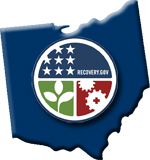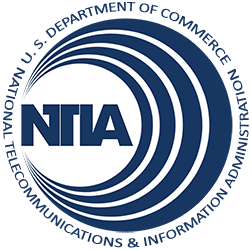Given the disparity between rural and urban areas of western Ohio in high-speed Internet infrastructure, many regional community anchor institutions struggle to obtain critical broadband services, while last-mile service providers have difficulty obtaining the backhaul capacity needed to serve these areas. Com Net’s GigE PLUS project proposes to construct almost 700 new miles of high-capacity fiber to expand an existing network throughout 28 western Ohio counties. Com Net expects the enhanced network to provide speeds of up to 40 Gbps to as many as 880 community anchors institutions, and middle mile network speeds up to 100 Gbps to the region’s 33 last-mile service providers. The project plans to directly connect 212 K-12 schools, 173 state and local government offices, 112 public safety facilities, 84 health care facilities, 12 community colleges, four universities, 43 libraries, 92 public housing facilities, 151 community support organizations, and five state parks.
Ohio

| Grantee | Total Award | Type |
|---|---|---|
| Com Net, Inc. | $30,031,849 | Infrastructure |
| Communication Service for the Deaf, Inc. | $14,988,657 | Sustainable Adoption |
| Connected Nation, Inc. | $6,856,399 | Sustainable Adoption |
| Horizon Telcom, Inc. | $66,474,247 | Infrastructure |
| Ohio Office of Information Technology | $7,025,762 | Broadband Data & Development |
| One Community | $18,701,771 | Sustainable Adoption |
| One Economy Corporation | $28,519,482 | Sustainable Adoption |
| OneCommunity | $44,794,046 | Infrastructure |
| Toledo-Lucas County Public Library | $2,163,655 | Public Computer Centers |
| University Corporation for Advanced Internet Development | $62,540,162 | Infrastructure |
| Zito Media Communications II, LLC | $6,136,904 | Infrastructure |
Broadband’s ability to expand educational and employment opportunities is especially meaningful for Americans who are deaf or hard of hearing, a community that faces unique challenges in education and that suffers from a rate of unemployment much higher than the national average. Communication Service for the Deaf, Inc. (CSD) intends to expand broadband adoption among people who are deaf and hard of hearing and provide them with online tools to more fully participate in the digital economy. The project proposes to employ a combination of discounted broadband service and specialized computers, technology training from an online state-of-the art support center customized to the community’s needs, public access to videophones at anchor institutions from coast to coast, and a nationwide outreach initiative. Thousands will gain online access to all the Internet has to offer, including sign language interpreters, captioned video services, and other content and functionalities designed especially to advance their educational, employment, and healthcare interests.
Connect Ohio, a subsidiary of Connected Nation, proposes to encourage broadband adoption in Ohio by conducting training sessions at libraries, community colleges, and other anchor institutions throughout the state. The OPAL II project intends to deploy trainers statewide for instruction in the use and maintenance of computer components, Internet use, and practical applications of broadband access. Once users have completed training, they will receive a certification that will allow them to take advantage of special offers from local broadband service providers to subscribe to home broadband service. The project plans to conduct an extensive statewide advertising campaign to raise awareness about training opportunities. These outreach efforts will utilize radio and television stations that provide programming for vulnerable populations, including Spanish-language stations, urban formats targeting African-Americans, stations reaching rural areas where lower-income citizens often reside, and stations with programming that targets an older demographic.
The economically distressed rural regions of the southern and eastern Ohio foothills lack sufficient access to fiber-based broadband service. Led by Horizon Telcom, the Connecting Appalachian Ohio Middle Mile Consortium proposes to construct 1,960 new miles of fiber, more than doubling the fiber in the service area and bringing middle-mile speeds of up to 10 Gbps to 34 targeted counties. The project also plans to bring high-capacity services to approximately 600 regional community anchor institutions, including 25 community colleges, 15 universities, 231 K-12 schools, 34 county 911 answering points, 212 healthcare facilities, and 34 industrial parks, with the potential to reach thousands more. Horizon Telcom states that more than 80 percent of community anchors in the area currently lack fiber-based broadband, while others lack the necessary broadband speeds to match their needs. The project also proposes to interconnect with the networks of BTOP awardees OneCommunity and ComNet, providing a far-reaching solution to Appalachian Ohio’s broadband needs.
Project Components
State Capacity Building:
The Connect Ohio Program Office, under the direction of the Ohio Office of Information Technology (OIT), will provide staff support to the Connect Ohio Technology Association, which consists of leadership form the Department of Development, the Office of Information Technology, the Department of Education, Public Utilities Commission, the State Library, legislators, state associations, broadband providers and other broadband stakeholders in Ohio. In Year 4, Connect Ohio will also conduct surveys in each of Ohio’s 88 counties to assess the rates of broadband adoption and the barriers to adoption. The results of these surveys will be peer reviewed before release.
Technical Assistance:
Building on the local planning teams that now exist in all of Ohio’s counties, the Connect Ohio Last Mile Enablement Project will provide broadband infrastructure assessments for local stakeholders so that they may effectively determine how to attract or build greater broadband capacity. These funds will also offer limited technical design support to determine best options for deployment and will share best practices statewide.
Data Collection, Integration, and Validation:
This project was originally funded for broadband planning activities and two years of data collection. In September of 2010, this project was amended to extend data collection activities for an additional three years and to identify and implement best practices.
Address File Development:
The State of Ohio maintains an existing partnership, the Location Based Response System (LBRS), between the state and local governments, to build accurate field verified address databases. This project will support direct funding to rural counties that lack the technical and/or financial resources required for LBRS participation.
The Connect Your Community (CYC) project intends to use an innovative and collaborative strategy to expand broadband adoption by almost 20,000 households in targeted communities in five states. Expanding on successful existing Cleveland-area programs, OneCommunity plans to work with non-profit and community organizations to implement neighbor-to-neighbor broadband adoption and awareness campaigns reaching 334,000 low-income individuals and to provide training and services to 33,000 people in Akron, Cleveland, and Zanesville, Ohio; Detroit, Michigan; Gulfport/Biloxi, Mississippi; Lexington, Kentucky; and Bradenton, Florida. Grant funds will enable project partners, including Urban League centers, libraries, schools, economic development agencies, and human service and housing organizations, to host computer classes and utilize online resources to fulfill their missions. The project plans to employ survey techniques to measure broadband adoption among program participants and track the program’s success over time.
The 21st Century Information and Support Ecosystem project proposes to implement a comprehensive program of computer training, wireless Internet access, broadband awareness marketing, and online content and applications to residents of 159 affordable and public housing developments and low-income communities in 50 cities and towns across 31 states and the District of Columbia. The project plans to implement four principal programs: training 2,500 youth to become “Digital Connectors” who will then provide digital literacy training to others in their communities; deploying localized broadband networks in public housing developments; developing online content and applications aimed at low-income, low-literacy audiences.
The prevailing broadband speeds available to many of northeastern Ohio’s vital community institutions and
government agencies are insufficient to provide necessary services to consumers in economically distressed
parts of the region. OneCommunity’s Transforming NE Ohio project proposes to build 900 new miles of fiber,
leveraging another 2,000 miles of existing network, across 20 counties. OneCommunity expects to directly
connect almost 800 community anchor institutions, including public safety entities, health care centers, K-12
schools, and higher education institutions at speeds between 100 Mbps and 40 Gbps, while enabling high-speed
last-mile service throughout the region.
The Toledo-Lucas County Public Library, in partnership with a wide array of community-serving institutions in the region, proposes a much-needed expansion of public computer access for Toledo residents through its @CCESS CENTER project. The @CCESS Center project plans to renovate and expand an existing library computer center and add a mobile unit to provide broadband access and training.
Both the expanded library computer center and the mobile unit plan to provide one-on-one instruction in basic computer skills, Internet use, job search, e-mail account management, and healthcare and preventative care awareness. The library also proposes to provide classes for small business owners and those interested in starting a small business. Proposed class topics include writing a business plan, business finances, health and safety regulations, and starting your own small business, as well as a key course: Retooling Your Life, which plans to teach patrons about job searches, interviewing skills, educational opportunities, and public benefits.
As part of a longstanding project to connect essential community anchor institutions across the country, and facilitate closer collaboration and long-term benefits for education, research, healthcare, public safety, and government services, the University Corporation for Advanced Internet Development (UCAID) proposes a comprehensive 50-state network benefitting approximately 121,000 community anchors. The project proposes a large-scale, public-private partnership to interconnect more than 30 existing research and education networks, creating a dedicated 100-200 Gbps nationwide fiber backbone with 3.2 terabits per second (TBps) total capacity that would enable advanced networking features such as IPv6 and video multicasting. The project plans to connect community anchors across all disciplines into virtual communities with shared goals and objectives, including colleges, universities, libraries, major veterans and other health care facilities, and public safety entities, with additional benefits to tribes, vulnerable populations, and government entities.
The Northeastern Ohio and Northwestern Pennsylvania Fiber Ring Project intends to create a 382-mile fiber ring with 10 gigabits of capacity through the counties of Geauga, Ashtabula, and Trumbull in Northeastern Ohio, and the counties of Erie, Crawford, and Mercer counties in Northwestern Pennsylvania. These areas generally have high unemployment and low income and are generally underserved in terms of broadband due to low population density. The project plans to deploy 342 miles of new fiber and 40 miles of leased fiber to directly connect an estimated 60 community anchor institutions at speeds from 10 Mbps to 1 Gbps, including hospitals, schools, public safety agencies, colleges, and libraries.
